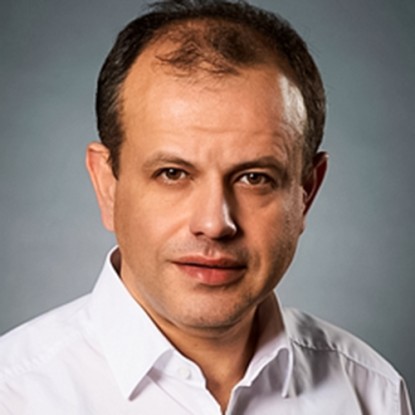Team
| Name | Contact | |
|---|---|---|

Picture: KIT
| apl. Prof. Dr. Rainer Suntz | rainer.suntz@kit.edu +49 721 608-42110 |

Picture: KIT
| Prof. Dr.-Ing. Dimosthenis Trimis | Dimosthenis.Trimis@kit.edu +49 721 608 42570 |

| Wenkun Zhu Ph.D. | wenkun.zhu@kit.edu |
Motivation
From the work of the first funding period it has become obvious, that the interaction between walls and scalars that have different boundary conditions at the wall is highly relevant. For example, there is a finite gradient for the temperature (equivalent to the occurrence of wall heat losses) while for concentrations there is a zero gradient (no species transport through the wall). If a shear flow of two partial flows of different concentration and temperature hits a wall, a perfect correlation between temperature and concentration far away from the wall is observed, due to the analogy between heat and mass transport. Near the wall, a de-correlation due to the different boundary conditions is expected. These conditions critically determine both, the detailed kinetics reduction methods and the turbulence-chemistry interaction modeling. Because this interaction is not well understood yet, this new subproject was designed with the aim of investigating the underlying mechanisms in detail by means of a generic experiment. This work is complemented by direct numerical simulations in subproject B02 and modeling in subproject B03.
Objectives
The subproject investigates the interaction between scalar transport and turbulence close to walls. For this purpose, a generic flow configuration is used that mimics relevant flows observed in internal combustion engines and exhaust gas systems. The experimental arrangement consists of a rectangular nozzle, which is divided in internally by a separating plate. The two partial flows may have different Reynolds numbers and/or temperatures or densities. At a defined distance from the nozzle, both partial flows hit a (hot) wall at different angles. The aim of the planned experiments is to investigate momentum, heat and mass transfer of the gaseous turbulent shear layer between the two flows as it impinges onto the wall. The velocity, temperature and concentration fields along the shear layer and in the near-wall region are measured simultaneously. From this, multidimensional joint probability distribution functions (PDFs) will be deduced. The acquired measurement data serves other subprojects for model development and validation of corresponding numerical simulations.
Approach
A flow configuration relevant for the combustion chamber of an engine or the exhaust gas system is developed. Two turbulent free jets are created by the nozzle arrangement in Figure 1, which interact above the nozzle exit and form a shear layer. Active grids are used to generate high turbulent Reynolds numbers of the flow at moderate gas throughputs. Above the nozzle exit, the shear layer strikes a horizontal or tilted wall. In the interaction zone, near-wall flow conditions are experimentally investigated. The flow and turbulence properties are determined by laser-optical measurements such as Particle Imaging Velocimetry (PIV), Particle Tracking Velocimetry (PTV) and 2-point Laser Doppler Anemometry (LDA). In particular, the last method is essential for determining the turbulence spectra and length scales, which are needed as input for numerical modeling.
Concentration and temperature fields are investigated by planar laser induced fluorescence (PLIF) using an organic fluorescence tracer (Anisol). The temperature distribution is determined from the ratio of the fluorescence signal at two different detection wavelengths. Once the local temperature is known, the fluorescence signal is used to evaluate the absolute tracer concentration and the mixing properties.
Current Work
Current objectives include the development of the experimental setup and active grids. Furthermore, the different laser diagnostics are prepared (LDA, PIV/PTV, and PLIF). Preliminary tests are conducted to investigate the temperature dependency of the tracer fluorescence spectra and to characterize the flow field with and without active grids. The flow and exchange properties near the wall are in the focus of the experiments. Therefore, the influencing parameters such as velocity, Reynolds number, density, tempered wall, angle of incidence and wall roughness are varied.
Cooperations
The experimental data obtained in this subproject serve to develop and validate the numerical models in subprojects B02 and B03. B02 uses direct numerical simulations of the heat and mass transfer to specifically investigate the influence of different boundary conditions on the joint statistics and correlations of the velocity and passive scalar fields. B03 uses both the generic experiment and the results of B02 as a basis to develop numerical modeling strategies of near-wall effects. The developments from these three subprojects are incorporated in the gradient estimations of B06 and B07 as well as the global models in C03 and C05. In addition, there is a transfer of knowledge about laser diagnostic techniques close to walls with subprojects A04, C01 and with A01 on wall heat flux measurements.



